Part V: Finale
Attack of the Clones would be much less
rife with Kurosawa references (though it contains a rather
lengthy Ford reference in the Searchers-inspired rescue of Shmi). Some of
the imagery of the love story is obviously taken from the love story
of Seven
Samurai:
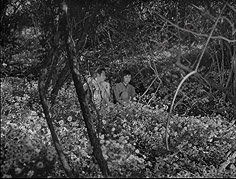

The clone
war battle also contains some startling similarities to the two
major battle sequences in Ran. In that
film, colour-coding plays a major role in identifying opposing
forces, and screen direction helps the audience orient themselves as
well. In Attack of the Clones, the
Republic often uses
green (and blue) blaster fire and attacks from right to left,
while the villains often use red blaster fire and attack from
screen-left to screen-right. This in itself was a clever inversion
of the original trilogy: in those films the rebels used red blaster
fire and usually attacked screen-left to screen-right (see the
Imperial Walker assault in Empire, for
example), while the Empire used green fire and usually attacked from
the right:

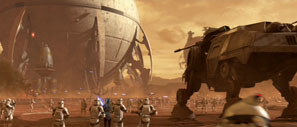



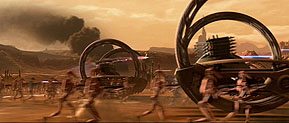


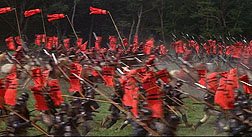


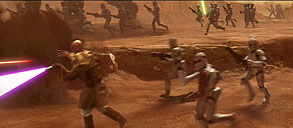

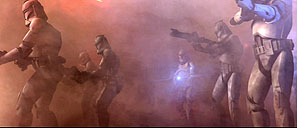

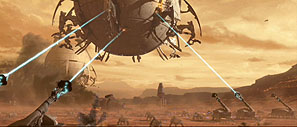
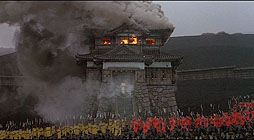

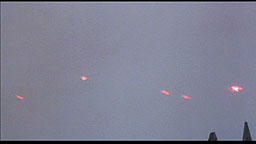
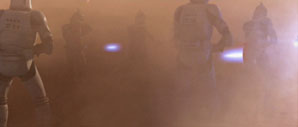
Revenge of the Sith, however,
would be barren of explicit Kurosawa references, save for a nod to
Seven Samurai as Yoda strokes his head like Takeshi Shimura
in an early scene on a Republic gunship (this was placed there by an
ILM animator).
As you
can see, the influence of Kurosawa goes much deeper than simply
inspiring a few story details in the scripts. The cinema of Akira
Kurosawa is an intertwined and deeply rooted part of George Lucas'
cinema. It has shaped Lucas' visual perspective, his stylistic
approach, his characters and his stories in both indirect and direct
ways. I hope this article has given you a newfound understanding for
both men. For those who are unfamiliar with Kurosawa's work, perhaps
this is a good opportunity to broaden your cinematic taste. Star Wars is what led
myself to Kurosawa, knowing that he was such an influence on Lucas,
and his films have since changed my perspective of cinema.
Criterion
has restored and presented
the director's finest work and are well on their way to
assembling his entire filmography (all 30 films)--barring any of
Kurosawa's 1940 and 1990's films, one should stick exclusively to
their editions. A good starting place is Seven Samurai, an appealing and heroic
drama, or similarly Hidden Fortress.
For those seeking darker examples, Throne
of Blood, Rashomon or Ran stand out as his finest films. Yojimbo and Sanjuro are more action-oriented
smaller-scale samurai films, the first being cynical and ironic and
the second being lighter and more heroic. His contemporary-set
dramas offer films that are of equal--or perhaps even
greater--merit; Ikiru is often touted
as one of his most important, though i find the police dramas of Stray Dog and High and Low to be much more interesting.
Finally, Red Beard and Dersu Uzala remain as two of his most
unique and touching films, with Red
Beard being downright sentimental--many consider it his most
accomplished work. With filming taking nearly two years it split
Kurosawa and Mifune apart and they never worked--and seldom
spoke--with one another
again.